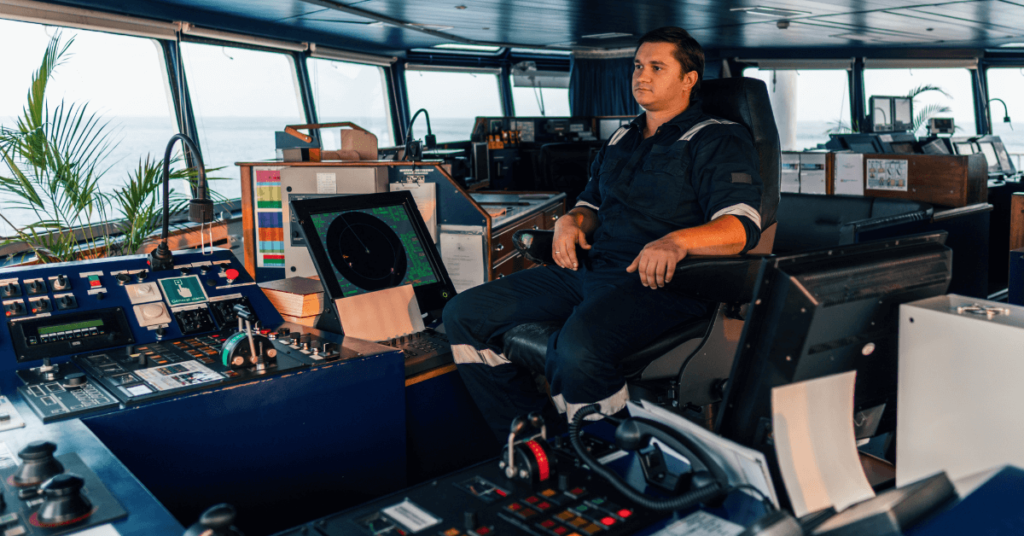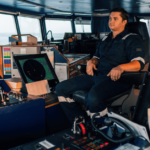What is Noon Report On Ships and How Is It Prepared?
A noon report is a data sheet prepared by the ship’s chief engineer on a daily basis. The report provides the vessel’s position and other relevant standardised data to assess the performance of the ship based on its speed and environmental forces including weather conditions.
Noon report is also used by ship managers to assess the difference in the performance of the vessels or between two similar types of ships (sister ships) to outline solutions for underperformance or possible issues.
The chief engineer is responsible for preparing the noon report and it is sent by the master to the company and shore management at a fixed time on daily basis (normally it is sent during noon, hence it’s called noon report).

Deck officer (normally 2nd officer) assists the chief engineer in providing the required data, which are used to complete the noon report. The master has the overall responsibility to ensure that the noon report is sent to the company on time.
Below is a general overview of the content of a noon report and how they are recorded:
- Ship’s Name: Name or Call sign of the ship
- Voyage number: Every noon report comes with the current voyage number where the ship is plying
- Date of the report: Date of noon report
- Time of the report: Time of noon report. Chief engineer and ship staff must ensure that the the noon report is sent daily at same time
- Position of the ship : The position of ship taken from GPS of the ship in Latitude and Longitude at the time of noon (or time of report preparation)
- Average speed done since last submitted noon report in knots: The average speed is calculated out from the net speed of the ship in knots since last noon report
- Propeller Slip: The total revolutions of the propeller from noon to noon is obtained using revolution counter. The engine distance can be calculated using the pitch of the propeller provided by the manufacturer. For calculations, please read this article.
- Average RPM: Average RPM Of the propulsion engine/ engines
- Wind Direction and wind force: The force and direction of the wind
- Sea and swell condition: General sea and swell condition at the time of report preparation
- Distance to Next Port of call/ destination: The distance which the ship needs to cover to reach the next port
- Estimated Time of Arrival: The Deck officer will calculate the ETA for the next port of call
- R.O.B : Following “Remaining on board” are prepared by the chief engineer where he/she takes account of either all Fuel oil/lube oil/water present on board ship or excluding the oil/water which are in the daily consumption or service tanks to keep a safe margin
- Fresh Water in MT
- Fuel Oil in MT
- LSFO in MT
- Diesel oil in MT
- LSDO in MT
- Lube oil for ME in MT
- Lube oil for Generator in MT
- Hydraulic oil in MT
Use of Noon Report:
The noon report is used to analyse the following parameters and performance:
– Consumption of fuel and lube on daily basis
– Total weight of cargo carried
– Distance covered from last port
– Distance to be covered for next port f call
– Time taken to complete the passage
– Time taken for port operation
– To order fuel/ lube oil as required
– To order fresh water as required
– To calculate the Energy Efficiency Operation Indicator
The noon report is one of the important documents on board ships that is recorded ad used for future references.
Do you know more about the noon report which can be added to this article?
Let’s know in the comments below.
Do you have info to share with us ? Suggest a correction
Latest Shipboard Guidelines Articles You Would Like:

About Author
An ardent sailor and a techie, Anish Wankhede has voyaged on a number of ships as a marine engineer officer. He loves multitasking, networking, and troubleshooting. He is the one behind the unique creativity and aesthetics at Marine Insight.
Subscribe To Our Newsletters
By subscribing, you agree to our Privacy Policy and may receive occasional deal communications; you can unsubscribe anytime.
















Noon report prepared and sent to the office by vessel’s master, who assist 2nd officer to find the exact noon position(latitude, longitude), determine the true distance run and the true speed, chief engineer givesto the master his noon egine performance report and consumptions, on board the vessels, Captain is the only representative of the owner.
Very helpful but I did not see propeller slip in this topic, right ?
Is it mandatory for the noon report to contain all the information mentioned in the format in the voyage orders or can they omit certain things like weather conditions etc?
noon report prepared by 2nd officer and send by master to office ,chief eng only give some information abt engine and fuel conm . some time ship send 2 noon report 1 for charter and 1 for company ..its depend on format of noon report asked by them …if its differ then 2 otherwise one . its a important recort to be maintain onboard by 2nd officer for further refrence . to check the performance of vessel . bon voyage
Thanks Sandeep for the additional information!
This is the speech you have to give when you deliver the report to the XO as the messenger of the watch.
Good afternoon sir, the officer of the deck sends his respects and announces the approaching hour of 12 o’clock, all reports are in hand and all cronometers have been compared. respectfully request permission to strike a pose on time sir.
Eight bells on time. Not strike a pose
chief eng is responsible for noon report same as other technical job on board the ship and master as send and reciever acting not more
Or if you work for a company like maersk the chief engineer makes his numbers on the sea report exactly what the company expects them to be so they get a good KPI score from the office. He keeps a separate file onboard for the actual numbers and uses a fudge factor for inport consumption or just has one bad day at sea to correct his what the KPI scorecard reads and his actual numbers.
@Erik: Truth to be told…
Well done
Every one on board should know how important are the reports for shipowners,
I also try to make my colleagues on board to prepare all items precisely, especially the weather conditions, so that the head office can make best use of the reports.
Thanks indeed